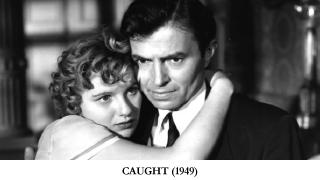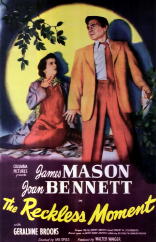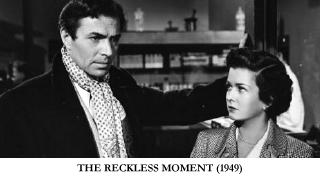No self-respecting mystery-oriented blog, especially one that also covers crime films, should be in existence very long without a discussion of Noir and “What’s a Noir Film?” breaking out.
It’s been touched on now and again here on Mystery*File, but while you may not have noticed, a lengthy conversation recently took place here, one that covered the subject more intensely than has ever happened before.
And, of all place, in the comments section of an old review I posted of Phantom Valley, a Durango Kid movie released by Columbia in 1948.
Here’s the last paragraph, in which I said of the leading lady:
“Virginia Hunter is very pretty and attractive, but she seems to have had only a short career in films. Her roles include at least one other Durango movie, several Three Stooges shorts, and a small part in the noir thriller He Walked by Night (1948). Mostly B-movies, looking down through the rest of the list, and often small uncredited parts at that, but she makes the most of this one.”
Since some interesting things were said, I’ll let those who commented take over from here:

MIKE GROST: “The IMDB says Virginia Hunter has tiny roles in Caught and The Reckless Moment, two films in the genre variously known as melodrama / romantic drama / Women’s films / soap opera. Both were directed by Max Ophuls. Ophuls is one of the most admired directors today, and his works are considered major classics. There are many books on him, including Max Ophuls in the Hollywood Studios (1996) by Lutz Bacher.
“I don’t remember Virginia Hunter in Caught at all. She must have had a very small part.”
WALKER MARTIN: “Mike, concerning Caught and The Reckless Moment, I agree with your use of the word ‘melodrama’ but I’m not so sure about the words ‘romantic drama/ Women’s films/soap opera.’ I viewed both these films about a year ago during my present habit of watching a film noir movie just about every night on dvd (these two films are on British PAL discs). They are definitely film noir with Caught starring James Mason and Robert Ryan and The Reckless Moment starring James Mason and Joan Bennett.
“Both films are listed in such basic film noir references as Film Noir: An Encyclopedic Reference by Alain Silver and Elizabeth Ward and Film Noir Guide by Keaney. You are right about Max Ophuls being one of the great directors but I guess we have to agree to disagree about these movies being women’s films or soap opera.”
DAVID VINEYARD: “The Reckless Moment is based on a novel by Elizabeth Saxnay Holding, The Blank Wall (1947). The Brooklyn-born Holding was married to an Englishman, and author of several well received novels pioneering the field of psychological suspense. The film is clearly in the noir mode with iconic noir actress Joan Bennett in the lead as a woman being blackmailed by James Mason. Anthony Boucher and Raymond Chandler were both champions of Holding’s work with Boucher crediting her with virtually creating the modern novel of psychological suspense.

“Caught, while also clearly in the noir mode, is also clearly a modern gothic in it’s plot of a young woman (Barbara Bel Geddes) who discovers her husband (Robert Ryan) isn’t who she thought he was and falls for the doctor(James Mason) who suspects foul play, but her escape is complicated because she is pregnant by her husband. It’s based on the novel Wild Calender by Libbie Block.
“Both films are generally listed in most noir reference books, though they might fit in a sub-category from the usual crime, spy, and private eye fare we tend to think of as noir. Other films in this more romantic noir mood include Fallen Angel, Leave Her to Heaven, Angel Face, and No Man of Her Own (based on Cornell Woolrich’s I Married a Dead Man).
“Though they are both pre-noir (officially noir begins with 1946’s Murder My Sweet, though plenty of films before that have noirish elements)these more romantic and femme centered noirs were often a mix of elements from Rebecca and Mildred Pierce, though they often featured iconic noir actresses such as Bennett, Bel Geddes, and Barbara Stanwyck.
“And before everyone piles on to mention the countless films that came out before 1946 that clearly have noir elements, the date is not entirely arbitrary. The term was coined by the French and was not used or recognized as a specific genre before that date. I can think of any number of films before Murder My Sweet I would call noir too, but film historians point out that noir couldn’t technically exist until the term was coined, however many films we think of as noir may seem to fit the pattern.
“I lean to including the pre-noirs in the general accepted genre, but don’t stretch quite as far as some so called noir collections on DVD that frankly seem to be pushing the boundaries to any film that deals with a crime and makes use of shadows in their cinematography.
“A perfectly good example would be Scotland Yard Inspector with Cesar Romero, which is available in one of the Film Noir sets. The film is an entertaining British B mystery in the Peter Cheyney mode, but it isn’t noir by any means.
“Noir is more attitude than subject matter, and as the old line goes, you know it when you see it. Some of these definitions would include any film that was in black and white and wasn’t a comedy, musical, or western.”
WALKER MARTIN: “Yes, we can argue all day about what is film noir and what period constitutes the film noir years, etc. I often see critics saying 1941-1959 is the basic film noir era. However, I have seen movies prior to 1941 that I would call film noir and I’ve seen alot of movies after 1959 that are certainly film noir or neo-noir. To try and pin down the exact definition or period will drive us crazy.
“For instance one of my favorite reference books is Film Noir: An Encyclopedic Reference by Silver and Ward. Since 1979, I have been checking off the films as I view them, listing the date viewed and my grade concerning quality. Sometimes I scribble a comment such as ‘This is not film noir.’
“A couple nights ago was the most recent time that I wrote this comment. I finally found a poor print of Thunderbolt, a 1929 early sound movie starring George Bancroft and Fay Wray. Despite Silver and Ward listing it in the book, there is no evidence that this film is anything more than a crime/prison drama. Yet they see some type of pre-noir element that justifies inclusion in the encyclopedia.
“I’m pretty liberal in what I include as film noir and I have to be, otherwise I would drive myself mad. The main thing is I enjoy this type of movie.”
MIKE GROST: “I’ve never seen The Reckless Moment. It’s good news that it is at last out on DVD!

“It’s certainly true that Caught is widely viewed as a noir. But I’ve always been a bit skeptical. Films like Fallen Angel or Mildred Pierce have murder mysteries in them. Everyone agrees they are noir.
“But there is no crime or even violence in Caught. It’s about a woman and her romantic affairs.
“Caught does have some character types we associate with noir. Robert Ryan’s nasty millionaire shows the ‘alienation and obsession’ Alain Silver rightly associates with noir. And the film is often dark in mood.
Still, I think ‘noir’ is best restricted to films with actual crime elements. Maybe we can all agree that Caught is ‘noir-like’…
“I last saw Thunderbolt (Josef von Sternberg, 1929) in 1972. Thought then it was a masterpiece! This is another film that badly needs to get back in circulation. Sternberg was a giant of the cinema.
“Have no opinions about whether is is pre-noir. Was astonished back then by its rich use of sound. It seems like one of the most creative and emotionally laden of the early talkies.
“Hardly anyone in Hollywood used the term noir, even after the French coined it circa 1946. Silver and Ursini’s Film Noir Reader 2 presents strong evidence that Hollywood called such films ‘crime movies,’ and thought of them as a distinct genre. IMHO ‘film noir’ is a great catchy name for this genre, and better than simple ‘crime movies.’ But the genre pre-existed its name. Films like The Stranger on the Third Floor and This Gun for Hire, made long before 1946, sure seem like film noir to me.”
DAVID VINEYARD: “I agree about stretching the limits of noir to include films made before and after the general cut off points. Certainly some of the pre code films have noir elements, as do films like Lang’s You Only Live Once and Fury (though I think in all honestly both are really crime drama and social drama respectively).
“Even strict constructionists who insist on the 1946 date will admit (reluctantly) that if The Big Sleep had been released in 1945 before Murder My Sweet instead of delayed a year (the 1945 cut has been restored) it would be the first true noir, but then the French invented the term to refer to a type of film that clearly goes back at least to the thirties and which they imitated in films like Jour le Seve and La Bete Humane (which Lang remade as a noir with Glenn Ford, Gloria Grahame, and Broderick Crawford).
Anthony Mann’s westerns since under that definition a western couldn’t be noir, though there are certainly noirish elements in many of them (and directed by notable noir directors).
“And in relation to the article, if it’s based on Cornell Woolrich isn’t it film noir by definition? The Falcon Takes Over and Time to Kill from the Michael Shayne series based on Raymond Chandler’s Farewell My Lovely and The High Window both have noir elements just by the nature of the stories, but though they are superior B series entries I don’t think either one is really noir. What is and isn’t noir is likely to be argued for a long time.

“I would likely agree to limiting noir to crime films, though in the case of Caught the combination of the actors involved — especially Robert Ryan — the look of the film, and director Max Ophuls there is certainly a case to be made for calling it noir.
“Even within the strictest definition of the genre there are films as diverse as the nihilistic Detour, the docudrama style of He Walked By Night or Lineup, and the moody romance of Out of the Past that are noir icons, but have little in common other than crime and being filmed in black and white. I suspect in the case of noir the answer lies in the eye of the beholder within some general guidelines.”
LUTZ BACHER: “In Caught, Virginia Hunter plays ‘Lushola,’ the inebriated woman who keeps interrupting Lee and Quinada at the bar in the Nightclub scene. In Reckless Moment, she’s seen more briefly at the juke box in the hotel bar (the second bar scene, near the end), repeatedly saying ‘same song again.’”
Me, Steve, again. Thanks to all who commented, with a special tip of the cap to Lutz Bacher for the definitive answer to who Virginia Hunter played, and when, the question which began this entire conversation!




